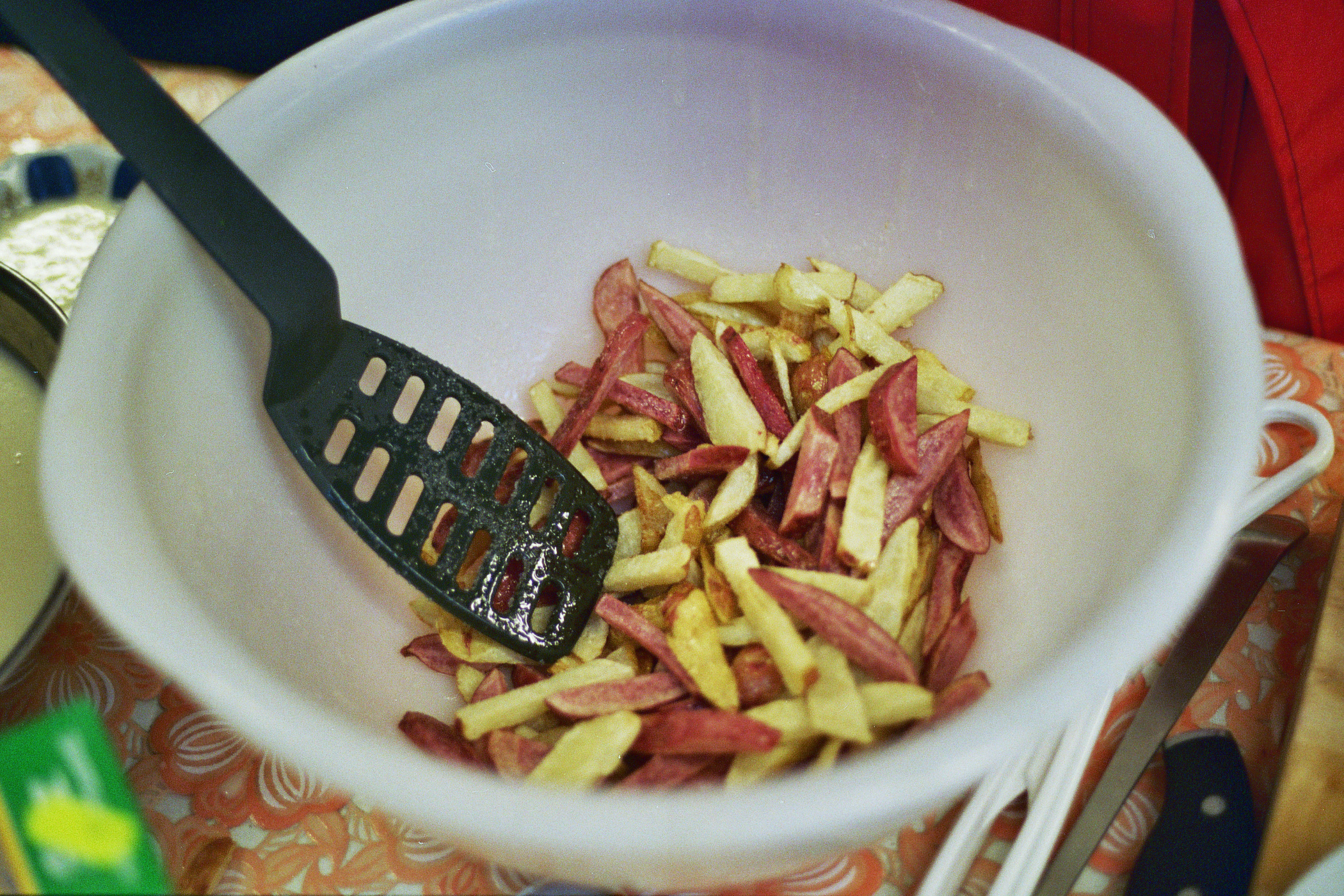The Order
of Potatoes
This ongoing artistic enquiry evolves around potato varieties that are restricted for commercial cultivation within the EU. Most of these old and new varieties are bred by farmers for small-scale use. They are genetically too diverse to meet EU’s regulations on Distinctiveness, Uniformity and Stability, the so-called DUS criteria, which have to be met in order for the plants to qualify for commercial use.

The potatoes are grown and circulated together with stories from the cultural and historical context in which they have been bred. When brought together, their stories tell about the long historical process in which they ended up as relegated bodies.











When presented, the potatoes are acompanied by paper sacks carrying information about the specific qualities of the variety printed on one side, and a narrative about social and cultural implications related to the variety on the other. In the compilation above, purposed for presentation within Germany, to exemplify other possibilities for relation, one variety is not comprised by the EU restirctions, as it is grown and circulated in the Bolivian Altiplano of the Andes only.
DOCUMENTATION I
Den Frie Udstillingsbygning, Copenhagen, Denmark. April - June, 2009.






Materials: EU pallets, sacks with 16 different potato varieties, paperbags with 16 different two sided prints.
Potato varieties: Mehlige Mühlviertler, Congo, Vitelotte, Æggeblomme, Rosa Tannenzapfen, Bamberger Hörnchen, Highland Burgundy, King Edward, Arran Victory, Lapin Puikula, Adretta, Asparges, Linda and Rote Emma.
Each paper bag had on the one side printed information about a potato variety and on the other side a related narrative on the cultural/ historical/ economical implication for this variety to have been bred.
Most of the presented varieties are old heirloom potato varieties prohibited for commercial circulation within The EU, since they do not live up to the standards of EU’s so called DUS-criterias (Durability Uniformity and Stability).
Visitors could fill the printed paper bags with potato of the described variety and bring with them to plant, cook or in other ways let circulate.
Curated by Sebastian Schiørring and Camilla Berner.
DOCUMENTATION II
The Potato Day
Sørfinnset Skole/The Nord Land art centre, 20 September, 2008.
In the spring of 2006, Søssa Jørgensen and Geir Tore Holm at Sørfinnset Skole/The Nord Land art centre in northern Norway asked me to send them a package of various peasant-bred potatoes. The centre is located in the small rural village of Sørfinnseth, in a former school building. Within two years, the varieties had spread in the village and were grown in most of the gardens. In 2008, Jørgensen and Holm invited me to take part in The Potato Day, a celebration of the annual harvest. They had organised a competition for the largest and most peculiar potato. The prize was a new seed potato of each variety. Village residents cooked various favourite potato dishes that were served and enjoyed, and I shared some stories about my work with potatoes.
DOCUMENTATION III
Collective cultivation in the Prinzessinnengarten experimental garden, Berlin, throughout the growing season of 2010.
In the spring of 2010, I was asked to join growing potatoes at the Prinzesinnengarten in Berlin. The open garde was located on a former wasteland, one of the few undeveloped plots of land still owned by the city. With the help of the garden’s many participants from th neighbourhood and beyond, a range of different potat varieties were planted, grown, tended, harvested, cooked, and finally celebrated with a feast. Some tubers were
also stored for the next year.
The varieties grown were Mehlige Mühlviertler, Blau Schwede, Vitelotte, Æggeblomme, Rosa Tannenzapfen, Bamberger Hörnchen, Highland Burgundy, King Edward, Arran Victory, Lapin Puikula, Adretta, Asparges, Linda, and Rote Emma.







Photography: Åsa Sonjasdotter, Karolin Meunier, and Gitte Villesen, 2010.
The harvest was celebrated with a large feast where dishes were prepared based on the different qualities and stories of the potatoes. The dishes were developed and prepared by a group of dedicated participants in the cultivation process and were based on their reflections on the stories and qualities of the different varieties. The dishes included: aloo bonda, a popular South Indian dish made with Blaue Schwede potato mash balls; papas chorreadas, a Colombian national dish made with boiled Vitelotte chips and green herb mash made with King Edward or Red Emma Pink; nettle soup made with Adretta; pommes Pont-Neuf, les vraies frites révolutionnaires made with King Edward and Rote Emma; plum dumplings made with Mehlige Mühlviertler and Vitelotte; and pizza made with Mehlige Mühlviertler potato dough and served with sweet tomato jam.
Marco Clausen, Bennar Markus, Svenja Nette, Matze Wilkens, and Robert Shaw were collaborators in the garden. Hannes Budweg, Leif Erich Christensen, Kim Hiorthøy, Till Kober, Nicole Messenlehner, Michael Pfefferle, and Ulrike Solbrig joined in the kitchen.